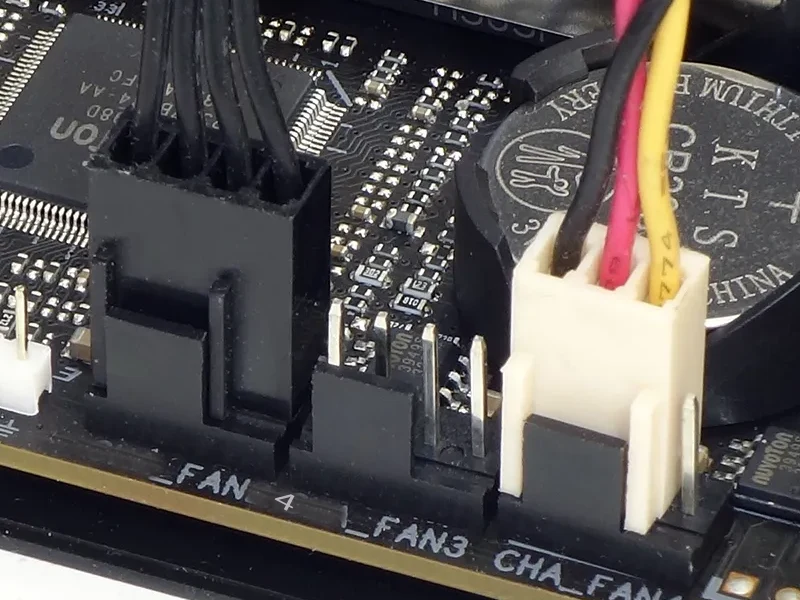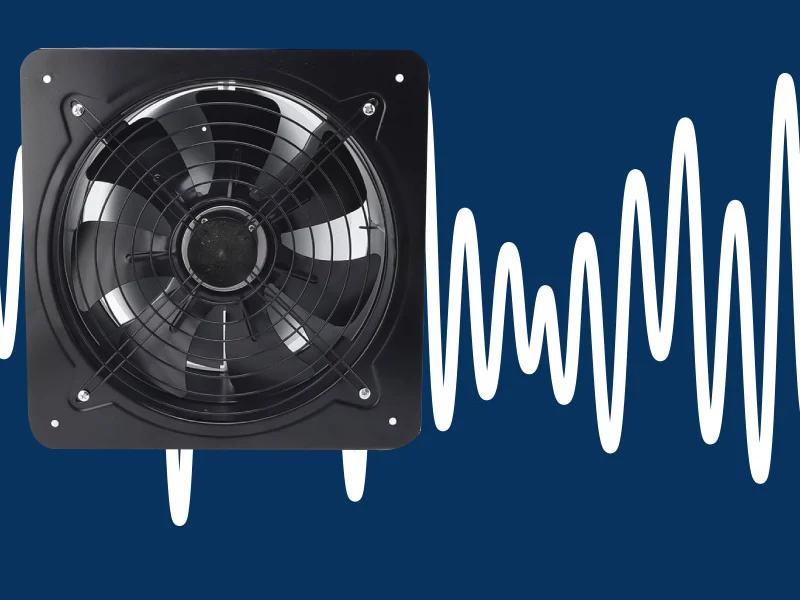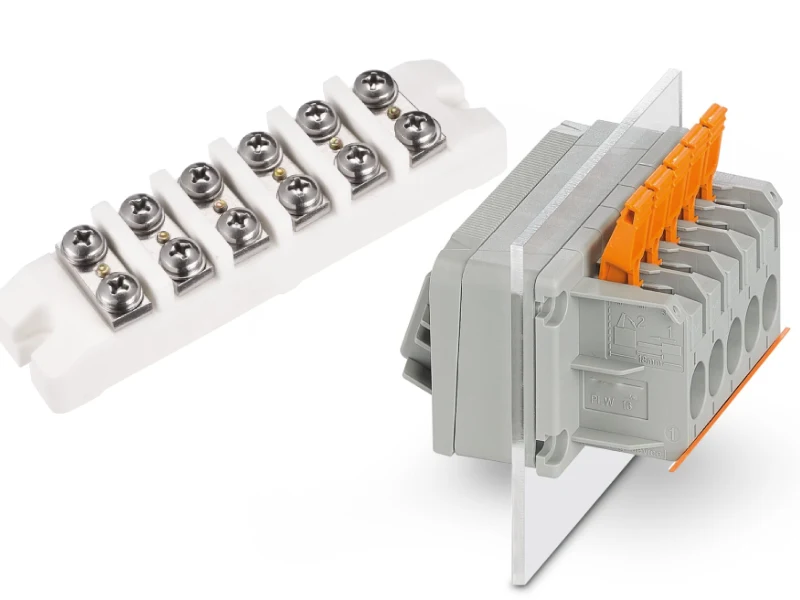An active cooling solution for your PC uses components such as fans or pumps to actively move heat away from critical hardware. If you’re wondering what is an active cooling solution for a PC, it refers to these systems that rely on mechanical parts to dissipate heat efficiently. Effective cooling is essential to keep your computer running smoothly and to protect it from potential damage.
Overheating can cause your PC’s components to slow down or fail prematurely. In fact, research indicates that for every 10 degrees Celsius above 21 degrees, the lifespan of electronic components can be reduced by half. By understanding what is an active cooling solution for a PC and implementing the right system, you can help your computer last longer and maintain optimal performance.
Key Takeaways
- Active cooling solutions use fans or pumps to move heat away from your PC, preventing overheating and ensuring smooth performance.
- Choosing the right cooling system based on your PC’s workload is crucial. High-performance tasks like gaming require active cooling to avoid damage.
- Regular maintenance, such as cleaning dust from fans and vents, helps keep your cooling system effective and extends the life of your hardware.
- Liquid cooling systems are more efficient for high-performance setups, while air cooling is simpler and more budget-friendly.
- Using a quality fan, like the Linkwell Computer Chassis Fan, can improve airflow, reduce noise, and enhance your PC’s overall stability.
What is an active cooling solution for a PC
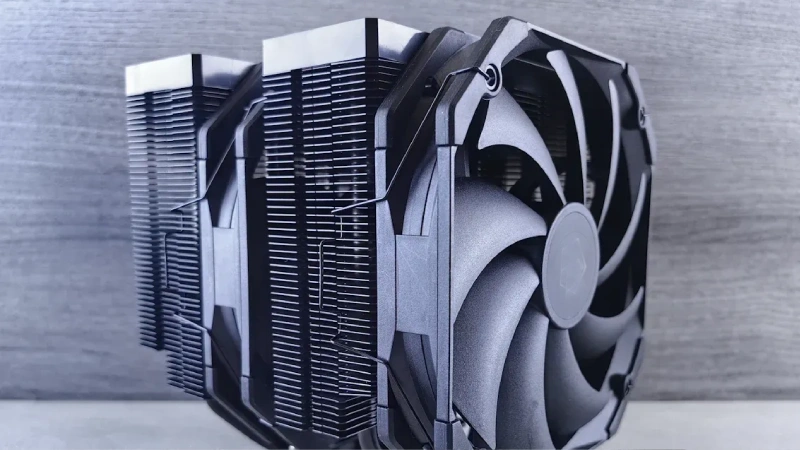
Definition and Key Features
When you ask what is an active cooling solution for a pc, you look for systems that use mechanical parts to move heat away from your computer’s components. Hardware manufacturers define active cooling as thermal management methods that use external energy sources, such as fans or pumps, to dissipate heat from electronic parts. These solutions do not rely on natural airflow or simple heat conduction. Instead, you get a system that pushes air or liquid across hot surfaces, removing heat quickly and efficiently.
You often see active cooling solutions in gaming computers, workstations, and servers. These systems include fans, liquid cooling pumps, and heat exchangers. You benefit from features like adjustable speed controls, smart sensors, and high airflow ratings. Many active cooling solutions offer advanced controls, such as PWM (Pulse Width Modulation), which lets you manage fan speed based on temperature. This helps you keep your PC cool while reducing noise and saving energy.
Tip: If you want your PC to run at peak performance, you should choose an active cooling solution that matches your hardware’s needs. This decision helps you avoid overheating and keeps your system stable.
Active vs Passive Cooling
You might wonder how active cooling compares to passive cooling. When you consider what is an active cooling solution for a pc, you notice that it uses power and moving parts. Passive cooling, on the other hand, relies on natural processes like convection and conduction. You see passive cooling in devices with heat sinks or cases designed to maximize airflow without fans.
Here is a table that shows the main differences between active and passive cooling solutions for PCs:
| Aspect | Active Cooling | Passive Cooling |
|---|---|---|
| Power Use | Requires external power | No extra power |
| Maintenance | More frequent upkeep | Minimal upkeep |
| Noise | Fans, pumps can be loud | Silent |
| Cooling Potential | High capacity possible | Limited by conduction & convection |
You should choose active cooling when your PC generates a lot of heat. For example, data centers use active cooling because servers run hot and need continuous airflow. Electric vehicles also depend on active cooling to keep batteries healthy. If you want to know what is an active cooling solution for a pc in these scenarios, you see that it provides reliable and powerful heat management.
| Scenario | Reason for Active Cooling |
|---|---|
| Data Centers | High heat generation from servers requires continuous cooling. |
| Electric Vehicles | Effective thermal management is crucial for battery health. |
When you select a cooling solution, you must think about your PC’s workload and environment. If you use your computer for gaming, video editing, or other demanding tasks, you need active cooling. Passive cooling works best for low-power devices or systems that do not produce much heat. By understanding what is an active cooling solution for a pc, you make smarter choices for your hardware and avoid performance issues.
How active cooling solutions work
Mechanisms and Components
You rely on active cooling solutions to keep your PC safe from overheating. These systems use mechanical parts to move heat away from sensitive components. You see fans, heat sinks, and liquid cooling systems working together to create effective thermal management. Fans push cool air into the case and pull hot air out. Heat sinks absorb heat from chips and transfer it to the air. Liquid cooling systems use tubes and pumps to move coolant over hot surfaces, carrying heat to a radiator where it escapes.
Here is a table that shows the main components you find in active cooling systems:
| Component | Description |
|---|---|
| Fans | Active cooling devices that circulate air to dissipate heat from the computer. |
| Heat sinks | Passive components that dissipate heat from specific parts, often used in conjunction with fans. |
| Liquid cooling | Advanced cooling system using liquids, typically distilled water, for efficient heat dissipation. |
You need these components to maintain proper thermal management. When you use your PC for gaming or heavy workloads, these parts work together to keep temperatures low and performance high.
Note: Good thermal management helps your computer run faster and last longer. You avoid sudden shutdowns and hardware damage when you use the right cooling system.
Role of Fans and Liquid Cooling
You see two main active cooling methods in modern PCs: fans and liquid cooling. Fans promote air movement and convection by blowing cool air onto heat-producing components. This method works well for most everyday tasks. Liquid cooling uses pumps to circulate coolant through tubes and radiators. The liquid absorbs heat from chips and releases it through the radiator, which makes this method more efficient for high-performance systems.
Here is a table that compares how fans and liquid cooling remove heat:
| Cooling Method | Approach to Heat Removal |
|---|---|
| Liquid Cooling | Utilizes coolant to efficiently dissipate heat through circulation and radiators. |
| Air Cooling | Relies on fans and heatsinks to move air and dissipate heat. |
Liquid cooling systems achieve lower temperatures than air cooling. You benefit from this when you run demanding games or use your PC for video editing. You also notice that liquid cooling tends to be quieter than fan-based systems. However, fans remain popular because they are affordable and easy to maintain.
Here is a table that highlights the differences between air and liquid cooling:
| Feature | Air Cooling | Liquid Cooling |
|---|---|---|
| Cost | Affordable | Expensive |
| Noise Levels | Can be loud | Quieter |
| Cooling Efficiency | Moderate | Superior for high loads |
| Ease of Maintenance | Low effort | Can require expertise |
You choose the right cooling method based on your needs. If you want simple thermal management, fans work well. If you need maximum cooling for heavy workloads, liquid cooling offers better results.
Types of active cooling solutions
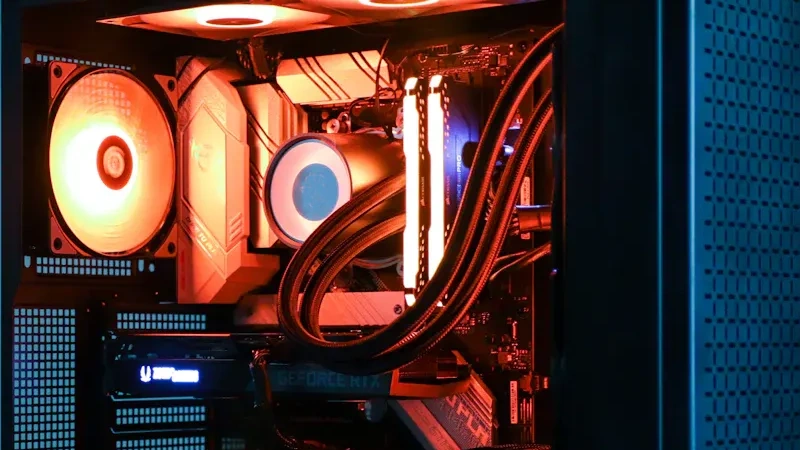
Air Cooling (Including Linkwell Computer Chassis Fan)
You often choose air cooling when you want a reliable and straightforward cooling solution for your PC. Air cooling uses fans to move air across heat-producing components, such as the CPU and GPU. The Linkwell Computer Chassis Fan stands out as a high-performance option. It delivers strong airflow while keeping noise levels low, which helps your system stay cool and quiet during heavy use. Unlike basic enclosure fans, the Linkwell Computer Chassis Fan focuses on maximizing airflow inside the case, making it ideal for gaming PCs and workstations.
Linkwell brings decades of expertise in ventilation systems and industrial-grade cooling products. You benefit from advanced features like PWM control for smart speed management and durable materials for long service life.
Here are some technical highlights of the Linkwell Computer Chassis Fan:
| Specification | Details |
|---|---|
| Voltage | [specific voltage] |
| Speed Ranges | [specific speed ranges] |
| Airflow (CFM) | [specific airflow] |
| Static Pressure | [specific static pressure] |
| Noise Level (dBA) | [specific noise level] |
| Connector Types | [specific connector types] |
| Material Composition | [specific materials] |
- Superior CFM airflow for maximum cooling
- Ultra-low dBA noise levels for silent operation
- Advanced PWM control for intelligent speed management
- Exceptional MTBF ratings for reliability
Liquid Cooling
You may consider liquid cooling when you need a cooling solution for high-performance environments. Liquid cooling systems use pumps and radiators to transfer heat away from components. These systems work well in gaming setups and data centers, where heat loads are high. The market for active liquid cooling continues to grow, showing its popularity among users who demand top performance.
| Advantages | Disadvantages |
|---|---|
| Superior Cooling Efficiency | Higher Cost |
| Quieter Operation | Installation Complexity |
| Aesthetics | Maintenance Requirements |
| Better Performance in Smaller Cases |
Comparing Air and Liquid Cooling
You should compare air and liquid cooling before choosing the best cooling solution for your PC. Air cooling is easier to install and maintain. You do not need specialized skills, and servicing is simple. Liquid cooling can be less complex to maintain if you use a closed-loop design, but installation is more challenging.
- Air cooling is budget-friendly and requires less maintenance.
- Liquid cooling offers better performance but costs more.
- Mid-range liquid cooling solutions provide benefits at a more affordable price.
Tip: Choose air cooling for simplicity and cost savings. Pick liquid cooling if you need maximum performance and quieter operation.
Why active cooling matters for PC performance
Preventing Overheating
You face several risks when your computer overheats. Overheating can slow down your system, cause sudden shutdowns, or even damage your hardware. Many common issues lead to high temperatures inside your PC:
- Dust buildup blocks air vents and fans, restricting airflow.
- Poor ventilation occurs when you place your computer on soft surfaces or in tight spaces.
- High resource usage from demanding applications increases heat.
- A fan that stops working cannot cool your system.
- Outdated drivers may cause hardware to run inefficiently.
- Hot room temperatures add to the heat inside your PC.
- Too many background processes overload your CPU and GPU.
Active pc cooling solutions help you address these problems. You can keep your system cool by regularly cleaning vents and fans, using cooling pads for laptops, and upgrading to more efficient fans. Optimizing your software and improving case ventilation also make a big difference. When you use active pc cooling, you prevent thermal throttling. This means your computer does not slow down to protect itself from heat. For example, some processors reduce their speed or even shut down when they get too hot. With proper cooling, you avoid these issues and keep your PC running smoothly.
Tip: Clean your PC’s fans and vents every few months. This simple step helps maintain good airflow and prevents overheating.
Enhancing Longevity and Stability
You want your computer to last as long as possible. High temperatures can shorten the lifespan of your hardware. When your PC runs hot, parts like the CPU, GPU, and motherboard wear out faster. Active pc cooling keeps these components within safe temperature limits. This reduces stress on your hardware and helps it perform better over time.
Active pc cooling also improves system stability. If your computer stays cool, you experience fewer crashes and errors. You avoid sudden shutdowns caused by overheating. By maintaining optimal temperatures, you protect your investment and enjoy a more reliable PC.
Many users have seen real benefits from using active pc cooling. For instance, replacing a faulty heat sink or upgrading to a better fan can stop thermal throttling. This means your computer no longer slows down during heavy use. You get consistent performance, even when running demanding programs.
Note: Keeping your PC cool is one of the best ways to extend its life and avoid costly repairs.
Linkwell Product Advantages
You can trust Linkwell’s Computer Chassis Fan to deliver outstanding pc cooling performance. This fan offers several unique features that set it apart from standard options:
| Feature | Description |
|---|---|
| Customizable Fan Speed | Adjust the speed based on temperature for efficient cooling. |
| High Craftsmanship Quality | Built for durability and long-term reliability. |
| Energy Efficiency | Uses less power while providing strong cooling, saving on energy costs. |
| Variety of Sizes | Fits different computer setups, ensuring easy compatibility. |
| Axial Flow Design | Enhances airflow management for effective internal cooling. |
- You can adjust the fan speed to match your system’s needs, which helps you balance cooling and noise.
- The high-quality build ensures the fan lasts longer, reducing the need for replacements.
- Energy-efficient design means you save on electricity without sacrificing performance.
- Multiple size options make it easy to find the right fit for your PC case.
- The axial flow design moves air efficiently, keeping all your components cool.
Linkwell’s Computer Chassis Fan supports stable operation and a long service life. You benefit from quiet operation, which is important if you use your PC in an office or shared space. The fan’s energy-saving features help you lower your electricity bills. With Linkwell, you get a pc cooling solution that combines reliability, efficiency, and quiet performance.
Choosing the right pc cooling solution, like Linkwell’s Computer Chassis Fan, helps you protect your hardware, improve performance, and save money in the long run.
Choosing PC cooling solutions
Factors to Consider
When you select a PC cooling solution, you need to think about several important factors. These factors help you keep your computer running smoothly and protect your investment. Here are the main points you should consider:
- Preventing Overheating and Throttling
You want to keep your PC at safe temperatures. Overheating can cause your system to slow down or even shut off to protect itself. - Maximizing Performance
Good cooling lets your components work at their best, especially during demanding tasks like gaming or video editing. - Longer Component Lifespan
Lower temperatures help your hardware last longer. You avoid thermal damage and reduce the risk of early failure. - Overclocking and Maximizing Potential
If you plan to push your CPU or GPU beyond standard speeds, you need strong cooling to do this safely. - Quieter Operation
Some cooling solutions run quietly, which makes your PC more pleasant to use, especially in quiet environments.
You should also look at the size of your PC case, the airflow inside, and the noise level you find acceptable. Think about your budget and how much maintenance you are willing to do. If you build or upgrade computers for business, you may need bulk orders or special features. In these cases, you want a supplier who can customize solutions for your needs.
Tip: Always match your cooling solution to your PC’s workload and environment. This helps you avoid problems and get the best performance.
Active cooling keeps your PC safe and helps it run at top speed. You protect high-performance SSDs from overheating and extend their lifespan.
- Active cooling prevents thermal throttling in SSDs.
- Modern NVMe SSDs need more than passive cooling.
- Stable operation and longer life come from good heat management.
Choosing Linkwell’s Computer Chassis Fan gives you strong airflow, durable materials, and energy savings:
| Feature | Benefit |
|---|---|
| Optimal airflow design | Maintains system stability. |
| Industrial-grade materials | Extends service life. |
| Low-power consumption | Supports sustainable operations. |
You should check your cooling setup and upgrade if needed:
- Add case fans for better airflow.
- Inspect your power supply fan.
- Upgrade to water cooling for high performance.
- Adjust PC settings to lower heat.
- Keep software updated.
- Shut down your PC to cool it down.
Look for trusted brands with competitive pricing, strong warranties, unique features, and quiet operation. Your choice protects your hardware and boosts your PC’s reliability.
FAQ
What are active cooling solutions, and why do you need them?
You use active cooling solutions to move heat away from your PC parts. These cooling systems use fans or pumps. You need them to keep your computer safe from overheating and to help your hardware last longer.
How do cooling systems differ from passive options?
Cooling systems with active parts use fans or pumps to move air or liquid. Passive options only use heat sinks or natural airflow. You get better temperature control with active cooling solutions, especially when your PC works hard.
Can you use active cooling solutions in small PC cases?
Yes, you can install active cooling solutions in small cases. Many cooling systems come in different sizes. You should check the space inside your case before you buy. Compact fans and liquid cooling systems fit most builds.
How often should you clean your cooling systems?
You should clean your cooling systems every few months. Dust can block airflow and lower the performance of active cooling solutions. Use compressed air to remove dust from fans and vents. Clean cooling systems work better and last longer.
Do active cooling solutions make a lot of noise?
Some cooling systems can be noisy, but many active cooling solutions use quiet fans. You can choose models with low noise ratings. Modern cooling systems often include smart controls to keep noise low while still cooling your PC.

